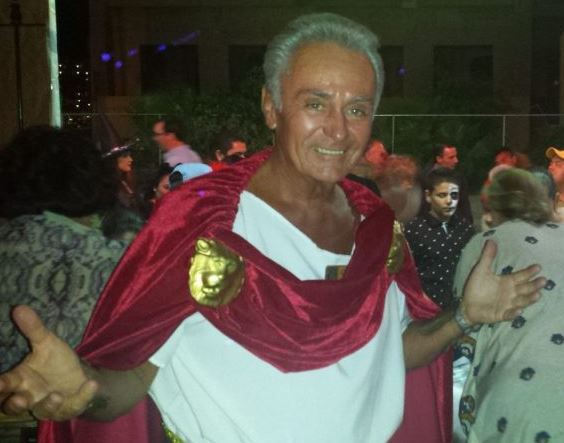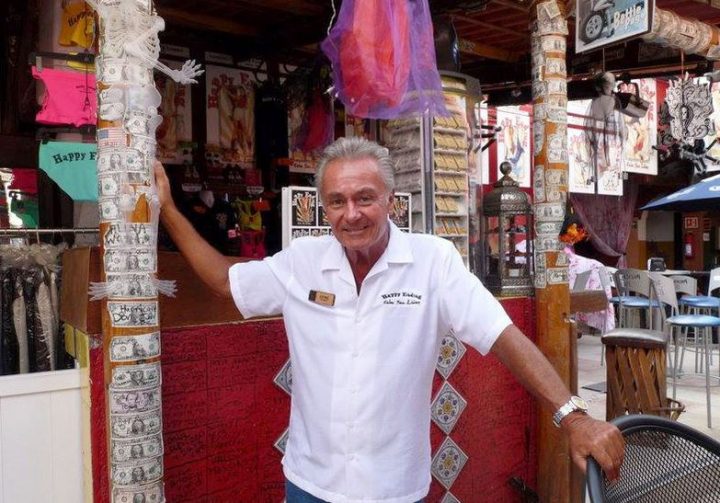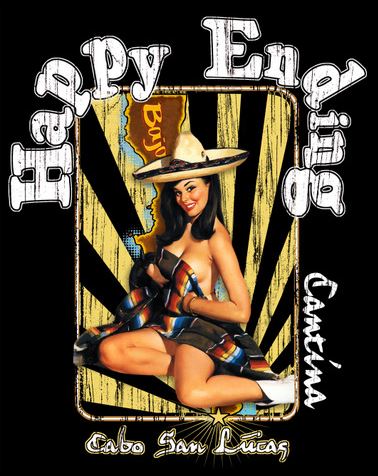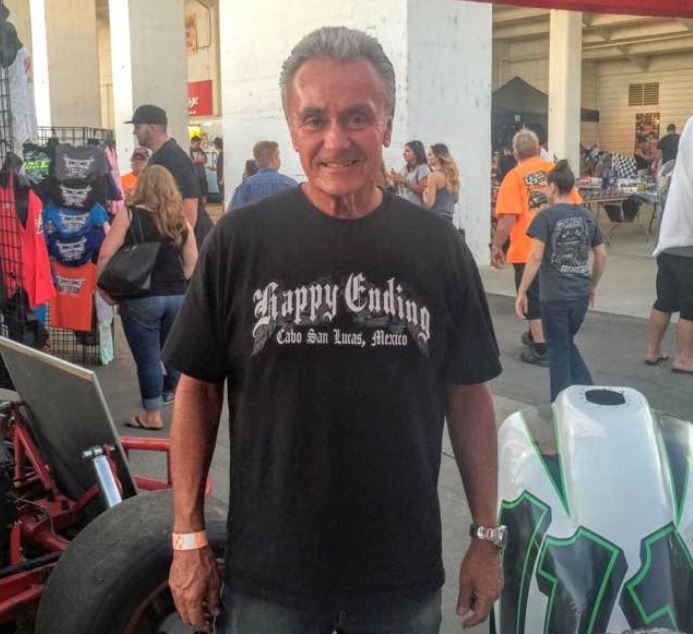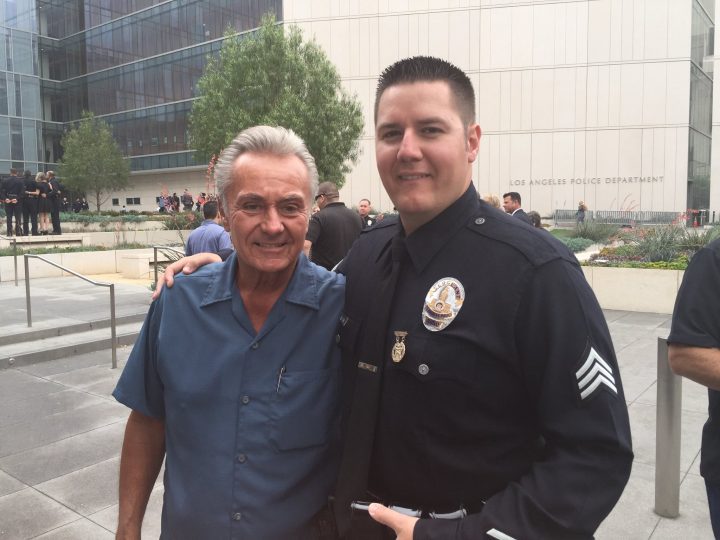Once again, we want to pay tribute to our great researchers and tipsters. We simply couldn’t keep up this daily website without the invaluable help we get from unsung heroes who are constantly on the lookout for court records and business documents and so many other things.
One of our best helpers recently shared with us a really fun find. And that’s how we can give you an update today on one of Scientology’s most notorious characters, its former chief dirty tricks private eye, Eugene Ingram.
From about 1982 to 2012 — a span of 30 years — Gene Ingram was the guy the Church of Scientology turned to not only to dig up dirt on people it considered enemies, but also to stage elaborate operations that sometimes put him on the wrong side of the law.
Ingram had been a member of the Los Angeles Police Department whose career had ended in a pretty unsavory way. Here’s how the Los Angeles Times described it in its landmark 1990 series by Joel Sappell and Robert Welkos…
More recently, Scientology investigations have been run by former Los Angeles Police Department sergeant Eugene Ingram, who was fired by the department in 1981 for allegedly running a house of prostitution and alerting a drug dealer of a planned raid. (In a later jury trial, Ingram was acquitted of all criminal charges.)
AdvertisementWhen he needs help, Ingram has sometimes turned to former LAPD colleagues. Ex-officer Al Bei, for example, played a key role in a 1984 investigation of David Mayo, an influential Scientology defector who had opened a rival church near Santa Barbara. Scientologists believed Mayo was using stolen Hubbard teachings.
Bei and other investigators questioned local businessmen, handing out business cards that said, “Special Agent, Task Force on White Collar Crime.” Their questions suggested — falsely — that Mayo was linked to international terrorism and drug smuggling, according to court records. At a local bank, Bei tried without success to obtain Mayo’s banking records and implied that Mayo was engaged in money laundering, an executive of the bank said.
The investigators rented an office directly above Mayo’s facility and leaned from the windows to photograph everyone who entered. Mayo eventually obtained a court order barring Ingram Investigations and church members from going near Mayo or his facility. The judge said the investigation amounted to “harassment.”
Spreading false rumors about a Scientology target by implying that they were the subject of a police investigation was standard fare for the church and its private eyes. Ingram not only used this method, at one time he was even wanted in two states for impersonating police officers.
We’ve written about Ingram numerous times. A story we did about attorney Graham Berry back in 1999 explained how Berry accused Ingram of pretending to be an LA cop in order to intimidate a former Berry associate into writing a false affidavit about him.
Gerry Armstrong has numerous stories about how Ingram targeted him at his website. And we talked with Jesse Prince this week, who was a member of Scientology’s inner elite when Ingram was hired.
“That guy took me into the world of Robert Ludlum,” Jesse says with a laugh. “The world of spies. It was right at the end of the GO makeover and before anyone thought of the name OSA.”
In the early 1980s, after a 1977 FBI raid had resulted in convictions of 11 top Scientology officials — including Mary Sue Hubbard, the wife of Scientology founder L. Ron Hubbard — the church’s sophisticated spy operation, the Guardian’s Office, was being dismantled in favor of a new wing that would become known as the Office of Special Affairs, or OSA.
“Those of us who controlled the church no longer had the ability to run phone numbers and get police records and other dirt we used to get from the old GO,” Jesse explains. But then Ingram was hired, and everything changed.
“All I knew about him from being briefed at ASI was that he was a dirty ex-cop, but that he knew everyone. It was amazing how quickly he could bring up a police profile on someone, or phone records — the same day you asked for them — when it would take the GO several days to get it.”
Jesse says the first case he remembers Ingram being brought in for, in 1982, involved a newspaper leak that the church wanted to plug.
“I was pretty green and naive, I didn’t know what was going on. I was told by Vicki Aznaran, who got it from Miscavige, to report to some seedy hotel in South LA,” he says, referring to David Miscavige, the young Sea Org officer who would eventually take over Scientology after Hubbard’s death in 1986.
Jesse arrived at the hotel where Ingram was holding a person he suspected of being part of the leak to the Los Angeles Times. It was going to be Jesse’s job to get information out of the guy with the use of a Scientology e-meter.
“Ingram had set up the room. He brought the guy in — and I don’t remember his name, but he was totally freaked out. Ingram said, whatever you do, do it quickly. Then he stood at the door and pulled out his pistol. I thought, are you serious? I put the guy on the meter after I explained how it worked. I started interrogating him based on information that Ingram had already got out of him. I don’t remember what the guy said. But I do remember someone beating on the door, and the guy saying he had to get out. And Ingram yelled at him, you aren’t going anywhere! And then he said we might have to shoot our way out of there. It was crazy. The guy was crying, in fear for his life, and Gene was screaming at the person at the door. I don’t know how we got out of there.”
With his unique talents, Ingram commanded a large salary from the church, Jesse says, and he was soon driving around in a new car. The church also spent large amounts in expenses when Ingram needed it. Jesse remembers an elaborate operation, for example, in the case of David Mayo, which the Los Angeles Times article we quoted earlier mentioned.
Mayo was a top technical person in the church — and L. Ron Hubbard’s personal auditor — who had broken away and then set up his own independent version of Scientology in Santa Barbara, calling his facility the Advanced Ability Center.
This represented a huge threat as some of Scientology’s wealthy members were growing disillusioned with the organization since Hubbard had gone into total seclusion in 1980, and they were taking their business to the AAC. It’s well documented that the church threw a massive amount of resources into trying to destroy Mayo and his independent operation. As the LA Times article mentioned, the church had private eyes rent the office directly upstairs from Mayo’s and photographed who came and went. They also sent in spies posing as customers, including Nancy Many, who has written about her experiences as a Scientology operative in her book My Billion-Year Contract.
Jesse tells us that the operation had one major obstacle: They couldn’t get Mayo to come away from the facility long enough to burglarize his office and get records to find out how much money the AAC was taking in. But then, enter Eugene Ingram.
“What Ingram did, he went in there and posed as a TV producer, a journalist, and he pumped up Mayo about being persecuted. Gene told him he wanted to interview him on TV. We bought time at a studio and rented cameras. So, while Mayo is being interviewed at the studio, we had other people getting into his office, getting all of his shit. His mailing list, records of his finances. And then we used the mailing list to send the people letters to tell them we knew that they were using the AAC and we were coming after them.”
It was a slick operation, and the kind of thing that Ingram specialized in for many years.
When we interviewed author Russell Miller on the occasion of his 1987 biography of Hubbard, Bare-Faced Messiah, coming back into print in 2014, Miller told us about Ingram’s pursuit of him. At one point, Miller told us, Ingram was trying to destroy Miller’s livelihood by spreading the false rumor that Russell had murdered an American man in East Germany that he’d been sent to interview. “Eugene Ingram was certainly the major figure, because later on they then tracked down virtually everybody I knew in the United States and Europe. I mean, it was amazing to me. They found every single person I knew in the United States, and I knew a lot of people there because I worked there frequently. So they were in Chicago, Denver, Los Angeles, San Francisco, New York, Washington, and it always seemed to be Eugene Ingram turning up,” Miller told us.
But Jesse told us that for all of that work around the world Ingram did for the church, it was all purely in the name of business.
“Nobody ever put Gene Ingram on the meter and tried to make him a Scientologist,” Jesse says.
We include that detail in particular because the man who replaced Ingram as Scientology’s chief dirty trickster, a private eye named Dave Lubow, feels very differently about that. In an affidavit Lubow submitted in Monique Rathbun’s 2013 harassment lawsuit against the church, Lubow swore that he was, in fact, a Scientologist, and that he was personally offended at the things former Scientology executive Marty Rathbun had said about David Miscavige on his blog. That was Lubow’s justification, anyway, for why he had organized church members to become part of a bizarre surveillance crew known as the “Squirrel Busters,” who followed the Rathbuns around for months in the summer of 2011 and tried to make their life “a living hell,” according to one former member of the squad.
Anyway, Lubow is off the hook in that matter since the lawsuit was dropped, and we still aren’t too sure how much of a Scientologist he is. But one thing’s for sure, he hasn’t achieved quite the legendary reputation of his predecessor, Gene Ingram.
There are so many disturbing and wacky stories about Ingram and the things he did while he was working for Scientology. Attorney Michael Flynn was one target of his elaborate schemes, for example, which we talk about in our book about Paulette Cooper. But we noticed that Ingram had, in more recent years, seemed to have faded away. We telephoned him a couple of years ago; he called us some not very nice names and threatened us if we ever called him again at home.
Still, we sometimes wondered what he was up to.
And then, our researcher made an interesting find. He found that Ingram was posting numerous photos from his retirement online. With the help of former Scientology spokesman Mike Rinder, who used to work closely with Ingram, we confirmed that this is indeed Scientology’s old dirty trickster. It turns out that in 2008, Ingram and his wife built a watering hole on an empty lot they owned in Cabo San Lucas. Gene runs the place, calling himself “El Jefe,” and he also came up with the name for the bar: the Happy Ending Cantina.
The Cabo club caters especially to law enforcement officers who are in Baja California to blow off steam. And according to photos the cantina posts on Facebook (which is the source of all the photos we’ve gathered for this story), its other demographic is young women who enjoy dancing on bar tops.
Gene himself has written a pretty interesting history of the place, which we thought some of our ex-Scientologists whose many donations over the years must have helped pay for this joint, might be curious about…
“El Jefe,” and his wife Regine, “La Jefa,” first visited Cabo San Lucas in the summer of 1986 and fell in love with the area. Back then there were only two paved streets in Cabo, no street lights, no traffic lights, no supermarkets, and no golf courses. There were virtually no tourist activities other than fishing, swimming, or sunbathing on wide open deserted beaches. The only bar in town was the Giggling Marlin, built in 1985 by a couple of young American guys, as a place where visiting fishermen could eat and drink. Everything back then, including food, drinks and land, was dirt cheap. Cabo’s only private school, El Camino, located in the exclusive Pedregal development, opened in 1984. Cabo’s Mexican residents were the friendliest in the world.
Gene and Regine decided to buy an oceanfront home under construction and move to Cabo. They did so simply to live on the beach with their 5-year-old daughter and 1-year-old son. Their new life living in Cabo began in December 1986. They had no idea Regine would be giving birth to twins, a boy and a girl, just eight months later. They had no plans to ever start any kind of business in Cabo.
At that time, Gene had been a California licensed Private Investigator for four years after retiring early as a Sergeant with the Los Angeles Police Department due to being injured on duty. As a P.I., Gene specialized in conducting Complex Litigation Investigations, International Investigations, and Cover Intelligence Gathering and Analysis for attorneys and private clients from around the world. Regine was a full-time mom and homemaker.
Gene and Regine drove the ATVs they brought with them to get around town, take their daughter to and from school and explore Cabo’s pristine beaches and virtually all of Los Cabos. Back then Cabo was truly a magical place to live. It was impossible to rent a car in Cabo and there was virtually nothing for tourists to do if they didn’t fish or like to swim or sunbathe. Practically every time Gene or Regine drove their ATVs around town tourists would ask them from where the ATVs were rented. Gene and Regine decided it would be fun to open an ATV tour business in Cabo. In early 1987, Gene returned to So Cal, purchased 25 ATVs and 60 scooters and shipped them back to Cabo. Gene and Regine purchased a huge dirt lot, where they would later build Happy Ending Cantina, and opened “Cubasco’s,” the first ATV & scooter rental company in Mexico. Fortunately for them, the business flourished.
Six years later Gene and Regine decided it best to move back to the USA so their four children, all fluent in Spanish and English, could receive an American education. They closed Chubasco, built three rental stores on the property, and moved back to So Cal. The family spent most ensuing summers vacationing in Cabo so they could stay in touch with all their Cabo amigos.
In 2008, one of Gene and Regine’s tenants was forced to close his business. They decided to redevelop the property and use it themselves. By this time, there were many new hotels, bars, and restaurants in Cabo. Plus, Cabo was attracting not just fishermen but just about everyone else. Celebrities, professional athletes, and VIPs were frequently seen around town. Gene and Regine’s property was now in the middle of all the popular new bars and clubs in Cabo. Gene describes the property’s location as being on the “50-yard line.”
Cabo Wabo and the old Giggling Marlin were in one “end zone,” while El Squid Roe and the Hard Rock were in the other. Gene and Regine decided it best to build a cantina where Chubasco’s was once located. However, neither Gene nor Regine had any bar or restaurant experience but decided to build the most unique cantina in the world. They built Happy Ending from the ground up in five and a half months and opened for business on October 29, 2008. Gene named it Happy Ending Cantina and designed the first logo.
Gene goes on to write…
Gene and Regine’s kids have grown into adults and all now live in So Cal. They now range in age from 26 to 32. Both boys are married and the oldest is the father of twin girls. The youngest girl is an Advertising Executive. Her twin brother is an LAPD police officer. Their 28-year-old son is also an LAPD police officer. Their oldest daughter is a Deputy District Attorney in Los Angeles.
Gene retired from his private investigation business in 2012 after thirty years working on behalf of clients around the planet. Gene and Regine now spend as much time in Cabo San Lucas as possible running Happy Ending when they’re not in Southern California.
When he is back in California, he’s still promoting his Cabo bar…
…or he’s celebrating when one of his sons, Rex, gets promoted to sergeant at the LAPD…
But it’s good to know that after all the fun Gene had trying to destroy the lives of people like Gerry Armstrong and Mike Flynn and Russell Miller and Graham Berry and so many others on behalf of the Church of Scientology, he’s now having so much fun…
We reached out to Gene through the Happy Ending Cantina, but he apparently hasn’t changed his mind about us and didn’t respond. But if you’re in Cabo, stop by for a margarita and tell him we said hello.
——————–
 Posted by Tony Ortega on August 2, 2016 at 07:00
Posted by Tony Ortega on August 2, 2016 at 07:00
E-mail tips and story ideas to tonyo94 AT gmail DOT com or follow us on Twitter. We post behind-the-scenes updates at our Facebook author page. After every new story we send out an alert to our e-mail list and our FB page.
Our book, The Unbreakable Miss Lovely: How the Church of Scientology tried to destroy Paulette Cooper, is on sale at Amazon in paperback and Kindle editions. We’ve posted photographs of Paulette and scenes from her life at a separate location. Reader Sookie put together a complete index. More information about the book, and our 2015 book tour, can also be found at the book’s dedicated page.
Learn about Scientology with our numerous series with experts…
BLOGGING DIANETICS: We read Scientology’s founding text cover to cover with the help of L.A. attorney and former church member Vance Woodward
UP THE BRIDGE: Claire Headley and Bruce Hines train us as Scientologists
GETTING OUR ETHICS IN: Jefferson Hawkins explains Scientology’s system of justice
SCIENTOLOGY MYTHBUSTING: Historian Jon Atack discusses key Scientology concepts
Other links: Shelly Miscavige, ten years gone | The Lisa McPherson story told in real time | The Cathriona White stories | The Leah Remini ‘Knowledge Reports’ | Hear audio of a Scientology excommunication | Scientology’s little day care of horrors | Whatever happened to Steve Fishman? | Felony charges for Scientology’s drug rehab scam | Why Scientology digs bomb-proof vaults in the desert | PZ Myers reads L. Ron Hubbard’s “A History of Man” | Scientology’s Master Spies | Scientology’s Private Dancer | The mystery of the richest Scientologist and his wayward sons | Scientology’s shocking mistreatment of the mentally ill | Scientology boasts about assistance from Google | The Underground Bunker’s Official Theme Song | The Underground Bunker FAQ
Our Guide to Alex Gibney’s film ‘Going Clear,’ and our pages about its principal figures…
Jason Beghe | Tom DeVocht | Sara Goldberg | Paul Haggis | Mark “Marty” Rathbun | Mike Rinder | Spanky Taylor | Hana Whitfield





